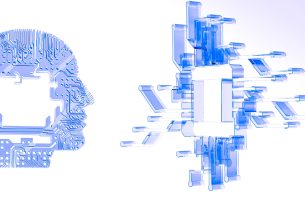Imagine a world where your artificial intelligence (AI) assistant could manage your finances, schedule appointments and tailor your social media feed to show content that won’t aggravate you. This AI might be trained to also curate your non-fungible token (NFT) art collection and help you file your crypto taxes.
While AI has gained mainstream traction (with tech giants including Microsoft, Google and Adobe joining the fray), Web3 has further to go. Bitcoin has been minting blocks for 13 years, but most still are unsure what crypto is for.
However, with the emergence of AI’s creative potential, the need for and abilities of Web3 have never been clearer. Cryptographic security and digital sovereignty are increasingly essential as AI is rolled out to forge a more vibrant, empowering digital landscape and pave the way for an innovative, user-centric and secure internet experience.
With a few prompts, anyone can use AI tools to create images, text or code, saving time and making content production faster and easier. At the same time, Web3 technologies such as blockchain, smart contracts and digital IDs are building the groundwork for a secure, interoperable metaverse that reclaims user data control.
Regaining control over personal data in an age of data breaches and privacy concerns cannot be overstated. Web3 can help in fostering trust and autonomy in the digital realm. Digital IDs, in particular, provide individuals with a unified, user-controlled internet identity. They’re likely essential to creating long-standing, verified personal reputation systems in the real world and the metaverse.
This shift toward decentralization and digitization empowers people and businesses to ultimately wrest control from the clutches of Big Tech monopolies. Despite concerns about both crypto and AI, they also hold vast potential to free people up to create (and reap what they sow).
Consider the process of generating art for metaverse platforms. AI can produce basic elements such as mountains, castles or forests while human artists add the finishing touches that breathe life into the scene. This collaboration can extend to nearly every industry – from content moderation to business management. The use of automatized smart contracts can help ensure humans still receive fair credit and compensation for the work they do.
Moreover, AI assistants like ChatGPT, already adept at processing natural language, could be expanded to build people’s online reputations. AI tools will soon be able to curate unique NFT art collections tied to a user’s digital ID, which reflect someone’s personal or professional achievements – like a comprehensive LinkedIn page that follows users everywhere online. Unstoppable Domains, for instance, has already integrated ChatGPT into its search bar, offering an AI partner to help shoppers brainstorm creative Web3 domain ideas.
While the full range of innovations driven by AI, Web3 and the metaverse remains uncertain, the potential is undeniably vast. By designing technologies that enhance human experiences, we can build an internet that resembles our wildest sci-fi fantasies. These revolutions are just around the corner, and it is up to developers and technology leaders to shape their futures.
New tech is being deployed that has the potential to box fix lingering issues with existing technologies and also deepen the issues that come with economic and social disruption like data privacy, equitable access to services and potential job displacement. Open dialogue and collaboration among technologists, policymakers and society at large will be essential in overcoming these challenges.
On the brink of massive digital transformation, the synergistic relationship between AI, Web3 and the metaverse offers a wealth of opportunities to reinvent how everyone experiences the internet. By championing collaboration, nurturing human creativity and proactively addressing potential challenges, we can establish a dynamic, decentralized digital realm that empowers individuals and unleashes the boundless potential of human innovation.
This content was originally published here.





